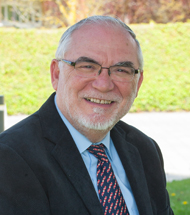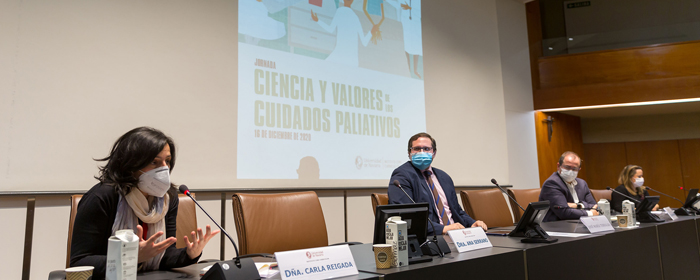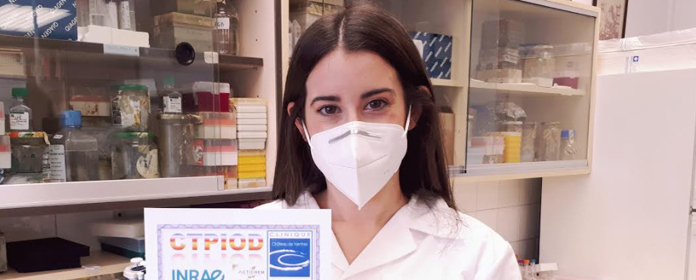"It will take 450 years to know how many species inhabit the Earth."
Xavier Bellés, insect expert and researcher of CSIC, has given the IV Albareda Lecture of the Chair Timac Agro-University of Navarra.

PHOTO: Manuel Castells
"Taking into account that 13,000 new species are described every year, and that estimates indicate that there are still about six million species to be discovered, it will take us 450 more years to know all the species on Earth," said Xavier Bellés, an expert in Entomology and researcher of the committee Superior Council for Scientific Research (CSIC), at the University of Navarra.
On the occasion of the IV Albareda Lecture, the expert stated that "the current rate of extinction is between 100 and 1,000 times higher than what was occurring naturally, according to paleontologists".
For the expert -director until recently of the high school of Evolutionary Biology of the CSIC and the Pompeu Fabra University of Barcelona - there is no doubt that the stability and functioning of the ecosystems that sustain the planet depend directly on biodiversity: "Perhaps one way to convince the incredulous of its importance would be to use economic arguments, since the services that biodiversity provides free of charge would be unaffordable with money. Just one example: more than 70% of edible plants are pollinated by insects".
Wehave no right to extinguish species and, on an aesthetic level, the world would be much uglier and duller if the issue of species that inhabit it were to fall dramatically. But we still have time to stop this catastrophe: "Very relevant scientists, such as Edward Wilson, propose to create a global network of reserves covering half of the surface. In 2015 nature's reserves were equivalent to 15% of the terrestrial area and 3% of the marine area , but these percentages are growing. That is the good news."
The mystery of metamorphosis: living two livesIn his lecture -which is part of the Albareda Lectures promoted by the Chair Timac Agro-University of Navarra with the goal to bring relevant scientists in the field of science to campus - Bellés focused on his specialization program of the last years in the high school of Evolutionary Biology: the metamorphosis of insects. This researcher, and his group, are unraveling the functioning of the genes involved in the action of the hormones that promote the change from larva to butterfly, passing through the intermediate status pupa.
According to Bellés, although it is still a hypothesis, "it seems that the fact that 80% of insects have a complete metamorphosis (insects represent 70% of the animal species that exist today, which also gives an idea of their importance) could be a very important evolutionary advantage, since it allows them to cover very different niches as larvae and as adults. In addition, this capacity for change comes from the fact that they have a rigid external skeleton that forces them to change it in order to grow, as happens with crustaceans, which are really very close to insects, and also undergo a process of metamorphosis".
Finally, on the occasion of this IV Albareda Lecture, the professor and Full Professor of the University Pablo Pérez presented the biography of José María Albareda, who was the father of Soil Science in Spain, the first University Secretary of the committee Superior Institute for Scientific Research (CSIC) and President of the University of Navarra.




